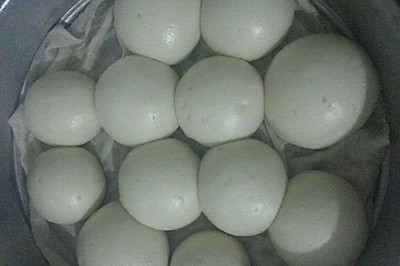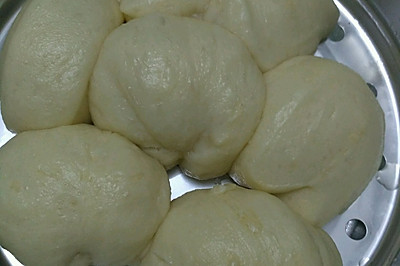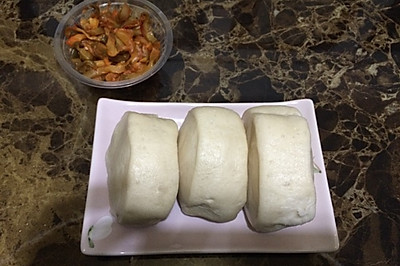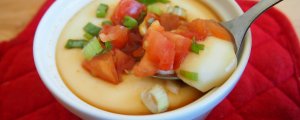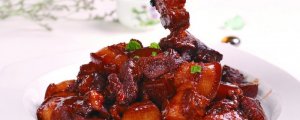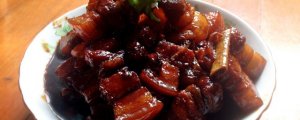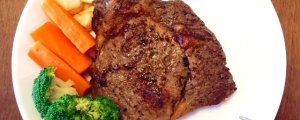
Steamed bread
(102386 views)
Cooking ingredients
Cooking Steps

Step1:600g flour, 250ml milk auxiliary material yeast powder 6

Step2:First put the milk in hot water and scald it. Scald it (about 30 ℃). Don't be too hot. Scald the yeast to death

Step3:Pour the warm milk into the basin. Then put the yeast powder into the milk. Stir with chopsticks until the yeast is completely melted

Step4:Put the flour in a large basin. Pour the milk on one side and stir it with chopsticks to form floccules (the milk should be poured little by little so as not to be too soft). If the milk is not enough, add a little water (depending on the situation, because the water absorption of flour is different)

Step5:Knead the dough into a smooth dough with the palm of your hand. Cover it for fermentation (note that the dough must be kneaded smooth and soft at this time. It is easy to ferment

Step6:In about 2 hours, the dough will be twice as big. It needs a little longer fermentation time in winter (if you see that the dough volume does not increase to twice, you can increase the fermentation time again

Step7:Ferment the dough into a honeycomb by hand. There are often grapefruit questions about the dough. Let's talk about it in detail here (because the dough is the key step. If the dough is not good, you can't steam the beautiful and soft steamed bread)

Step8:Take out the dough. Use your hands to knead it solid and smooth. Let out the bubbles.

Step9:Rub it into such a long thick stri

Step10:Tear the thick noodle into 150 doses (you can also pick up the dosage according to your favorite size. This will be very big when steamed out

Step11:The steamed bread is kneaded. When the steamed bread is kneaded, it tastes delicious

Step12:Use your left hand to hold the bottom with your thumb. Turn your left and right hands to knead. Knead until it's smooth. It's just like a steamed bun

Step13:Notice that the left and right hands must be kneaded together. The kneading is like thi

Step14:Then stand up the steamed bread. Round it with two palms. Just shape it.

Step15:Knead all steamed bread and put it on the curtain. Keep a certain distance between each steamed bread. Don't get too close

Step16:Cover the steamed bread with a clean and slightly wet cloth (make sure to cover it. If it is not covered, it is afraid to dry the skin). Let it stand for 20 minutes for secondary fermentation. (here's an explanation - it doesn't need secondary fermentation to make pattern pasta. It's easy to deform) steamed bread needs secondary fermentation. It's steamed out to soften and fluffy.

Step17:After the second fermentation, put a layer of oil on the grat

Step18:

Step19:
Cooking tips:1. Be sure to heat the milk for a while so as to fully differentiate the yeast powder. 2. Pour the milk into the flour bit by bit when mixing the flour, so as not to make the flour too soft. 3. In order to make the steamed bread soft and fluffy, the second fermentation is needed. There are skills in making delicious dishes.
 Chinese Food
Chinese Food
